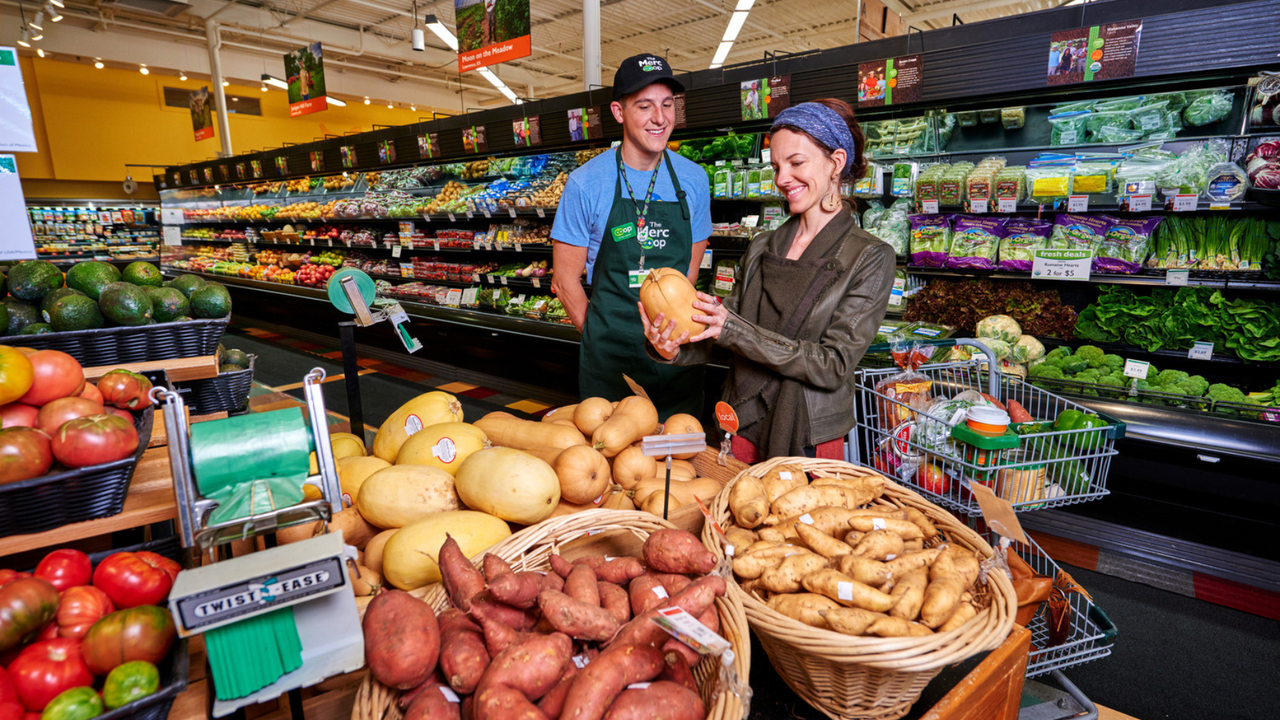Dave Schermerhorn becomes NCG’s new CCODave Schermerhorn becomes NCG’s new CCO
Learn how this industry veteran with more than 30 years of food cooperative experience plans to solve NCG's challenges and drive value as its new CCO.
September 29, 2025

At a Glance
- Schermerhorn has been serving as NCG's interim CCO since June and is ready to tackle common grocer challenges.
- Cooperatives are evolving to feature conventional products along with natural to cater to shifting customer needs.
- Schermerhorn looks to create brand awareness and promote simple solutions to supply chain and consumer needs.
Dave Schermerhorn, an industry veteran of cooperative retail and supply chain leadership, is officially the Chief Commercial Officer at National Co+op Grocers (NCG).
Schermerhorn jokes it was an interest in natural food—and a search for a better job—that initially brought him into food cooperative business.
While in college, Schermerhorn started working at the People's Food Co-op in La Crosse, Wisconsin.
“I had just started being a consumer of natural foods,” said Schermerhorn, who graduated from University of Wisconsin-La Crosse with a Bachelor of science degree in community health education in 1995. “Initially I wasn’t really that well informed about the cooperative ownership model.”
Now, with more than 30 years of experience in food cooperatives, including 24 years at NCG, Schermerhorn can take a breath. Since June, Schermerhorn has been serving as NCG’s interim CCO, following the promotion of NCG’s Ben Nauman to COO earlier this year.
With razor-thin profit margins, rising food costs, supply chain issues, increasing impacts of climate change, tariffs and a growing number of deportations, the food industry has become more difficult than ever.
“Being a grocer, is not an easy business,” Schermerhorn said.

Serving as interim CCO since June, Dave Schermerhorn plans to craft solutions to the biggest problems facing NCG as its new CCO.
A rapidly changing co-op landscape
Many of NCG’s member co-ops—which currently includes 167 members with 241 locations—organized in the late 1960s and early 1970s. Historically, many organized and favored missions around access to clean, natural foods.
“But that’s evolving really quickly,” Schermerhorn said. “We are working with more members now that are interested in hybrid, or even in some situations, assortments that lean more towards conventional.”
NCG is still a vastly natural and organic retailer Schermerhorn said, but even some of the long-term multi co-ops that have been open for decades are now offering an assortment with conventional alongside natural and organic offerings.
Why is this shift happening?
Schermerhorn said consumer-owned co-ops are now being used as a way to address food insecurity and access to food.
“Food Co-ops are being seen as part of the solution,” Schermerhorn said. “There are some parts of the country, some market areas, where communities are underserved. There isn't necessarily as much access to fresh food as would be helpful. And so co-ops are one possibility.”
In many of those communities, the assortment of food being sold might be a 20:80 split of conventional to organic, or sometimes an even 50:50 split.
“Whatever is the right mix for shoppers in that area,” Schermerhorn said.
But that’s only part of what is shifting, he said.
Historically, most U.S. food clubs have predominantly had natural and organic.
“There’s been a lot of deep introspection about the reality that while a lot of the ideals that we’ve seen in the food system have been catching on, not everybody's benefiting from that,” Schermerhorn said. “As a result, we have been working to find ways to develop a cooperative solution to fresh, healthy, affordable food in underserved areas.”
Generally, that’s been more focused on urban areas. “It’s not a specific region,” he said. “The issue seems to be widespread.”

NCG's efforts have been focused on the center of the store. Schermerhorn plans to drive value by shifting focus to the perimeter.
Finding solutions to challenges
Schermerhorn has spent much of his career developing NCG’s supplier programs and partnerships. He said because NCG has been focused on member success and serving communities, it hasn’t spent enough time “tooting its own horn” and marketing itself to be better known within the industry.
“It’s a fairly significant challenge for us,” Schermerhorn said.
Another hurdle: educating brands on how to pitch NCG more effectively.
Although the collective bargaining power of food cooperatives help stores within NCG, many brands trying to get shelf space aren’t pitching the right way.
“One of the biggest challenges for us is that many brands know our co-ops and they want to be on our shelves, but they might not be aware that all the co-ops are connected through NCG,” Schermerhorn said. “One of the things that we're still working to solve for is how we can connect with brands and connect them efficiently to all of our members. Taken together, food co-ops are UNFI’s second largest customer.”
A focus on driving value, shopping the perimeter
Most of NCG’s purchasing efforts and its program have been focused on the center store, Schermerhorn said. Pantry staples including coffee, sparkling water and olive oil as well as sub-categories such as yogurt, chocolate candy and cheeses are selling well.
As consumer’s interests shift and change, NCG is trying to adapt.
“There’s obviously a significant amount of consumer demand and interest in the perimeter,” Schermerhorn said. “This is an area where we are still building knowledge and attempting to build capacity over time.”
That will require slightly different solutions than what has worked for the center store.
NCG members mostly work directly with local producers. “That’s one of the strengths of the co-op system in that there's resiliency with those direct relationships between local producers and our member stores,” Schermerhorn said.
Right now, NCG doesn’t handle local sourcing for its members. “In the future, it's possible that that could look there, but there's a lot of different ways that that could be addressed,” he said.
That’s not a short-term priority.
Instead, NCG is focusing on how it can drive value to shoppers.
“For us, just starting with some of the higher volume items that are stackable in most households, and looking to partner with producers and with distributors to put the right value proposition together collectively so that we can drive value to shoppers is the first starting point,” Schermerhorn said.
NCG hasn’t developed programming yet on its perimeter. “I envision we’ll start with fairly simple solutions,” Schermerhorn said.
Instead of creating something particularly sophisticated, Schermerhorn said it will look to create brand awareness and efficiencies to create value that can be shared across the supply chain with its current customers.
“It can mean more volume through fewer items,” he said. “It is a lot about scale. There's a lot to balance in that equation. That's why we're going to take our time moving into this space.”
About the Author
You May Also Like


